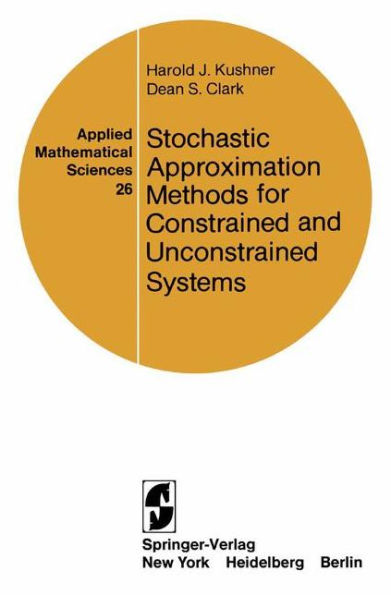5
1
9780387903415


Stochastic Approximation Methods for Constrained and Unconstrained Systems / Edition 1 available in Paperback

Stochastic Approximation Methods for Constrained and Unconstrained Systems / Edition 1
- ISBN-10:
- 0387903410
- ISBN-13:
- 9780387903415
- Pub. Date:
- 08/03/1978
- Publisher:
- Springer New York
- ISBN-10:
- 0387903410
- ISBN-13:
- 9780387903415
- Pub. Date:
- 08/03/1978
- Publisher:
- Springer New York
54.99
In Stock

Product Details
| ISBN-13: | 9780387903415 |
|---|---|
| Publisher: | Springer New York |
| Publication date: | 08/03/1978 |
| Series: | Applied Mathematical Sciences , #26 |
| Edition description: | Softcover reprint of the original 1st ed. 1978 |
| Pages: | 263 |
| Product dimensions: | 6.10(w) x 9.25(h) x 0.02(d) |
From the B&N Reads Blog
